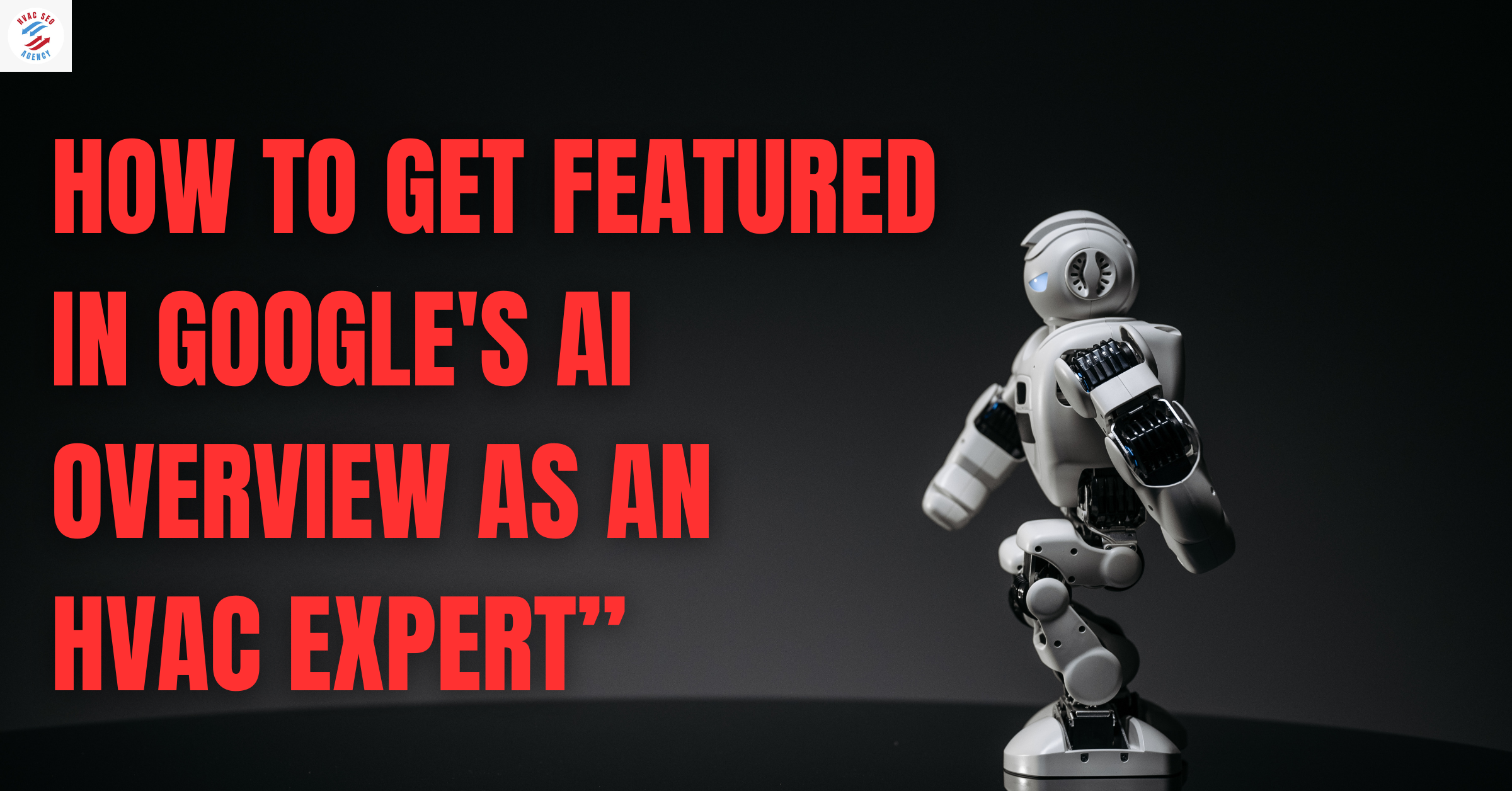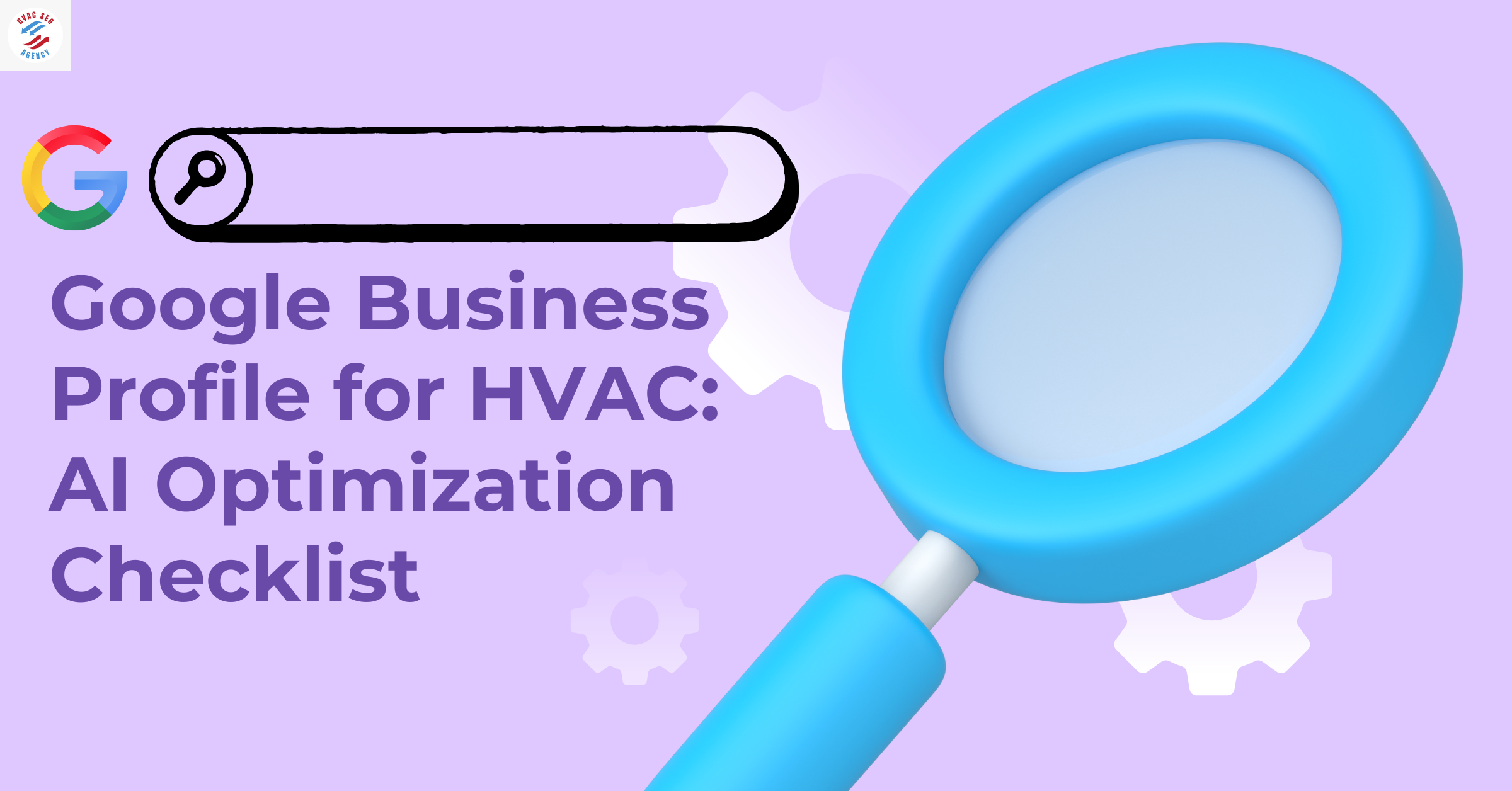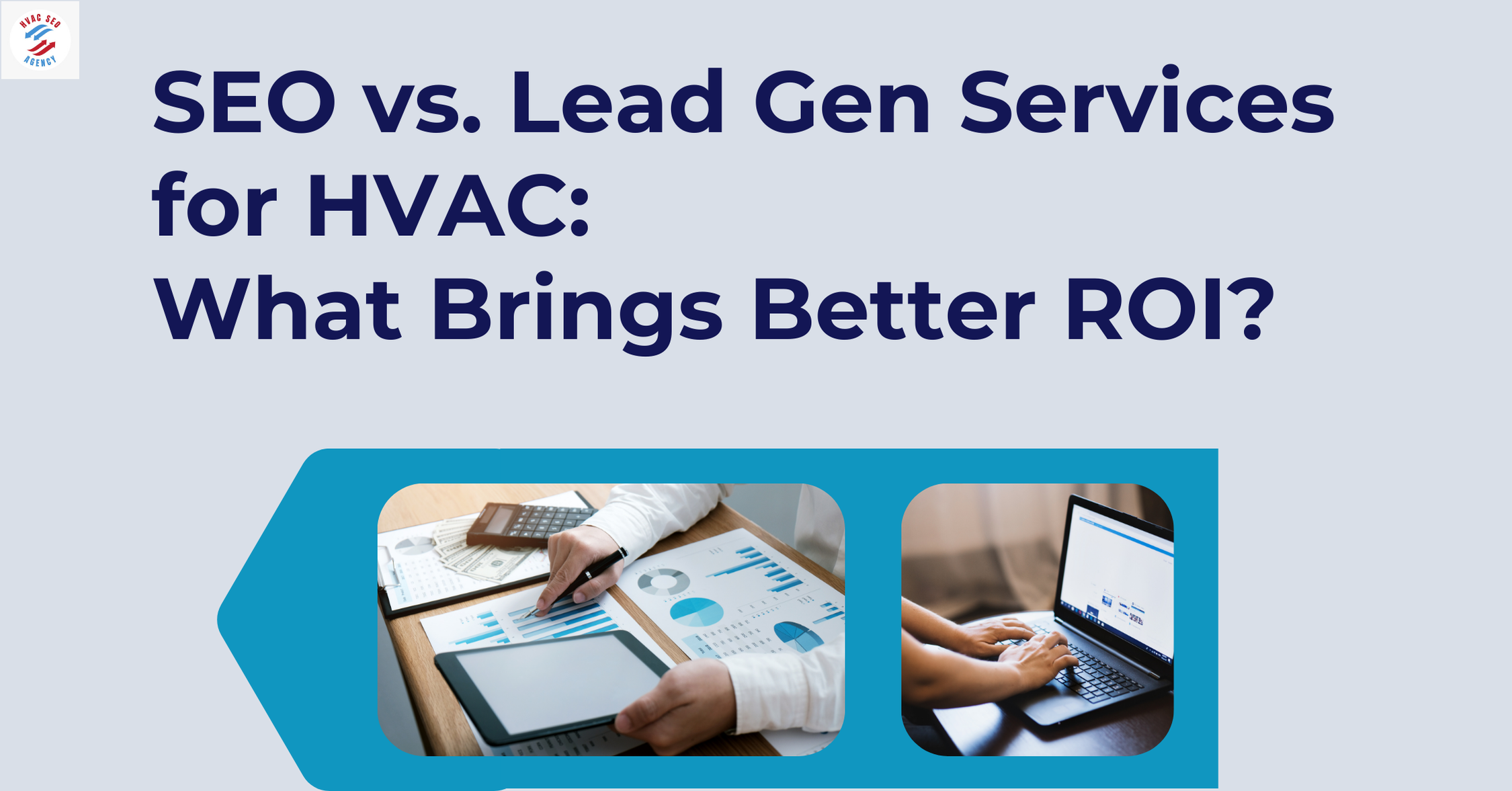Understanding HVAC System Efficiency Ratings and What They Mean

I. Why HVAC System Efficiency Ratings Matter?
When choosing an HVAC system, homeowners and businesses often focus on factors like brand, price, and features. However, HVAC system efficiency ratings are one of the most critical aspects that directly impact energy consumption, cost savings, and long-term performance. These ratings help measure how efficiently an HVAC unit converts energy into heating or cooling, affecting both monthly utility bills and environmental impact. For HVAC contractors, partnering with the best HVAC SEO agency can help educate customers on efficiency ratings while driving more service calls and increasing business growth.
By optimizing your website for local searches and HVAC SEO in [City], you can get more HVAC service calls and increase revenue effortlessly.
How HVAC Efficiency Ratings Affect Energy Bills
The higher the efficiency rating, the less energy an HVAC system requires to maintain indoor comfort. According to the U.S. Department of Energy (DOE), upgrading from a low-efficiency air conditioner (SEER 10) to a high-efficiency model (SEER 16 or above) can reduce cooling costs by 30%–40%.
Table: Potential Energy Savings Based on SEER Ratings
Environmental Benefits of High-Efficiency HVAC Systems
A well-rated HVAC system not only lowers electricity and gas bills but also reduces carbon emissions. According to the Environmental Protection Agency (EPA), heating and cooling account for nearly 50% of energy use in U.S. homes. Choosing an ENERGY STAR-certified system can lower greenhouse gas emissions by thousands of pounds annually.
Graph: Energy Usage Reduction with High-Efficiency HVAC Systems
Comparing Traditional vs. High-Efficiency HVAC Systems
Many homeowners wonder whether upgrading to a high-efficiency HVAC system is worth the investment. The answer depends on factors like climate, home insulation, and energy usage habits.
Table: Efficiency Differences – Traditional vs. High-Efficiency HVAC Systems
Now that we’ve established why HVAC efficiency matters, let’s explore the different efficiency ratings (SEER, EER, AFUE, and HSPF) and how they influence energy savings.
II. Breaking Down the Key HVAC Efficiency Ratings: SEER and EER
HVAC system efficiency ratings are designed to help consumers compare the performance of different heating and cooling units. The most well-known ratings include SEER (Seasonal Energy Efficiency Ratio) and EER (Energy Efficiency Ratio), both of which measure cooling efficiency.
1. SEER (Seasonal Energy Efficiency Ratio) – Cooling Efficiency Over a Season
What is SEER, and Why is It Important?
SEER measures the cooling efficiency of an air conditioner or heat pump over an entire cooling season. It calculates how much cooling output (BTUs) the system provides for every unit of electricity consumed (watt-hour). A higher SEER rating means the system uses less energy to cool a space.
Minimum SEER Requirements in the USA
The DOE mandates minimum SEER ratings depending on the region:
Comparison: Low vs. High SEER Ratings in Energy Savings
Graph: How SEER Ratings Impact Monthly Energy Bills
2. EER (Energy Efficiency Ratio) – Performance in Peak Conditions
What is EER, and How is It Different from SEER?
Unlike SEER, which measures efficiency over an entire season, EER calculates cooling efficiency at a single peak temperature (usually 95°F).
Differences Between SEER and EER:
Why EER Matters More in Certain Climates
Hot & Dry Climates (Arizona, Nevada, Texas): EER is more accurate because it measures performance under peak summer conditions.
Mild & Seasonal Climates (New York, Oregon): SEER is more relevant because cooling demand fluctuates.
EER Performance Comparison in Hot Climates
If you live in a region with high summer temperatures, prioritize EER.
If you need year-round efficiency, SEER is more important for long-term savings.
III. Breaking Down the Key HVAC Efficiency Ratings: AFUE and HSPF
AFUE (Annual Fuel Utilization Efficiency) – Measuring Heating Efficiency
What is AFUE, and Why is It Important?
AFUE (Annual Fuel Utilization Efficiency) measures how efficiently a furnace or boiler converts fuel (natural gas, propane, or oil) into usable heat. Expressed as a percentage, a higher AFUE rating means less fuel waste, leading to lower heating costs.
For example:
A furnace with 80% AFUE converts 80% of fuel into heat, while 20% is lost through exhaust gases.
A furnace with 95% AFUE wastes only 5% of fuel, making it far more efficient and cost-effective over time.
How Much Can You Save with a Higher AFUE?
Upgrading from an older furnace (AFUE 60%) to a high-efficiency model (AFUE 95%) can save up to 40% on heating costs.
Table: Cost Savings by AFUE Rating
Graph: Fuel Efficiency vs. AFUE Ratings
Minimum AFUE Standards in the USA
The U.S. Department of Energy (DOE) sets minimum AFUE efficiency ratings for furnaces:
While high-AFUE furnaces have a higher upfront cost ($4,000–$7,500), they pay for themselves in long-term energy savings. Plus, many states offer rebates for installing high-efficiency HVAC systems.
HSPF (Heating Seasonal Performance Factor) – Efficiency in Heat Pumps
What is HSPF, and Why is It Important?
HSPF (Heating Seasonal Performance Factor) measures the efficiency of heat pumps during the heating season. It calculates the total heat output divided by the electricity consumed, meaning higher HSPF values = better efficiency.
A high HSPF rating ensures lower electricity bills while maintaining indoor warmth.
How Does HSPF Compare to Other HVAC Efficiency Ratings?
Unlike SEER (for cooling) or AFUE (for furnaces), HSPF measures the efficiency of a heat pump in heating mode. It’s especially important for homeowners in moderate climates where heat pumps are a primary heating source.
Table: Comparison of HVAC Efficiency Ratings
A higher HSPF rating means lower electricity consumption for heating. The minimum required HSPF rating in the U.S. is 8.2, but modern heat pumps can achieve HSPF 10–13 for maximum efficiency.
Table: HSPF Rating and Cost Savings
Secondary keyword usage: Choosing a heat pump with a high HSPF rating ensures energy savings and reduced operational costs. Homeowners searching for HVAC SEO in [City] can benefit from investing in high-efficiency heat pumps that comply with the latest energy standards.
Graph: HSPF Rating vs. Heating Energy Consumption
How to Choose the Right HSPF for Your Home?
If you live in a mild climate, an HSPF 9–10 heat pump provides excellent efficiency.
If you experience colder winters, choose HSPF 11+ for better performance.
ENERGY STAR-certified heat pumps are always a smart investment.
IV. ENERGY STAR Certification: What It Means for HVAC Efficiency
What is ENERGY STAR Certification?
ENERGY STAR is a government-backed certification that identifies energy-efficient HVAC systems that meet strict efficiency guidelines set by the U.S. Environmental Protection Agency (EPA). HVAC units with ENERGY STAR ratings consume 15–25% less energy than non-certified models, significantly reducing electricity bills and carbon emissions.
Why ENERGY STAR Ratings Matter for HVAC Systems
When investing in a new HVAC system, homeowners should prioritize ENERGY STAR-certified models to ensure better performance, lower energy consumption, and long-term cost savings.
Primary keyword usage: Choosing an HVAC system with an ENERGY STAR certification ensures higher HVAC system efficiency ratings, reducing energy waste and operating costs. Businesses focusing on HVAC SEO in Houston can leverage this certification as a selling point for energy-conscious customers.
Investing in energy-efficient HVAC systems and leveraging digital marketing strategies can help reduce operating costs for HVAC contractors while attracting more high-value customers.
Minimum ENERGY STAR Standards for HVAC Systems (2024 Updated)
Graph: Energy Savings with ENERGY STAR-Certified HVAC Systems
Benefits of Choosing an ENERGY STAR HVAC System
Lower Utility Bills: ENERGY STAR-certified units use up to 25% less energy, cutting down heating and cooling costs.
Better Performance: High-efficiency HVAC systems maintain optimal temperature control with less strain on components.
Environmental Impact: Reduces carbon footprint by lowering greenhouse gas emissions.
Higher Resale Value: Homes equipped with energy-efficient HVAC systems are more attractive to buyers.
Rebates & Incentives: Many state and federal programs offer rebates for upgrading to ENERGY STAR models.
How to Identify ENERGY STAR HVAC Systems?
Look for the blue ENERGY STAR label on HVAC units.
Check efficiency ratings (SEER, EER, HSPF, AFUE) against ENERGY STAR standards.
Consult HVAC SEO Agency in Orlando for guidance on choosing certified HVAC units.
V. Factors That Affect HVAC System Efficiency Beyond Ratings
Even with high HVAC system efficiency ratings, real-world performance depends on installation, maintenance, and system design. Below are the key factors that influence efficiency beyond SEER, AFUE, and HSPF ratings.
1. Proper Sizing of the HVAC System
One of the biggest mistakes homeowners make is installing an oversized or undersized HVAC system.
Oversized Systems: Cycle on and off too frequently, leading to higher energy bills and uneven temperatures.
Undersized Systems: Run constantly, struggling to maintain temperature, increasing wear and tear.
Table: Impact of Improper HVAC Sizing on Efficiency
Leaky or uninsulated ducts can reduce HVAC efficiency by up to 30%. Even the best HVAC system efficiency ratings won’t help if conditioned air is escaping through poor ductwork.
Sealing ducts and adding insulation improves airflow, reducing energy waste.
Regularly cleaning air ducts prevents dust buildup, ensuring optimal HVAC performance.
3. Smart Thermostats and HVAC Efficiency
Smart thermostats optimize heating and cooling cycles, adjusting temperatures based on usage patterns and occupancy. This reduces energy consumption by up to 15%.
Graph: Energy Savings with Smart Thermostat Integration
4. Regular Maintenance and Its Role in Efficiency
Even a high SEER or AFUE HVAC system loses efficiency without regular maintenance.
Primary keyword usage: Homeowners must schedule professional maintenance to keep their HVAC system efficiency ratings high. Services such as HVAC SEO in Tampa can help businesses optimize their marketing strategies to attract more customers for maintenance services.
Table: Impact of HVAC Maintenance on Efficiency
Efficiency ratings like SEER, HSPF, and AFUE are more effective when matched to regional climates.
Hot Climates (Florida, Texas, Arizona) → Prioritize SEER 16+ & ENERGY STAR certification.
Cold Climates (Minnesota, New York, Michigan) → Choose AFUE 90%+ furnaces.
Mixed Climates (North Carolina, Virginia, Missouri) → Opt for a high-efficiency heat pump (HSPF 10+).
VI. How to Choose the Right HVAC System Based on Efficiency Ratings
Choosing the right HVAC system is more than just picking the highest HVAC system efficiency ratings. Homeowners and businesses must consider factors such as climate, energy costs, and long-term savings. Here’s a step-by-step guide to selecting the most efficient HVAC system for your needs.
Step 1: Understand Your Climate & Efficiency Needs
Your local climate determines which HVAC system efficiency rating matters most.
Hot Climates (Florida, Texas, Arizona): Prioritize SEER 16+ air conditioners and high EER units.
Cold Climates (Minnesota, New York, Michigan): Opt for high AFUE furnaces (90%+ AFUE) for efficient heating.
Moderate Climates (North Carolina, Virginia, Missouri): Choose a heat pump with HSPF 10+ and SEER 16+ for year-round efficiency.
Step 2: Compare Efficiency Ratings for Different HVAC Systems
A higher efficiency HVAC system costs more upfront but saves money in the long run.
Table: Cost vs. Energy Savings of High-Efficiency HVAC Systems
An ENERGY STAR-certified HVAC system ensures maximum efficiency and makes you eligible for rebates. HVAC SEO in [City] experts can help businesses market energy-efficient systems to potential customers.
VII. Government Policies and Incentives for Energy-Efficient HVAC Systems
Federal HVAC Efficiency Standards for 2024
The U.S. Department of Energy (DOE) has updated minimum efficiency requirements for HVAC systems in 2024.
The Inflation Reduction Act of 2022 introduced new tax credits for energy-efficient HVAC upgrades:
Table: 2024 Federal Tax Credits for High-Efficiency HVAC Systems
Many states offer additional rebates for high-efficiency HVAC systems. For example:
California: Up to $3,000 in rebates for ENERGY STAR-certified heat pumps.
New York: Offers low-interest financing for HVAC upgrades.
Florida: Homeowners can receive $500+ for upgrading to high-SEER systems.
How to Apply for HVAC Tax Credits & Rebates?
Check your eligibility
Purchase and install a qualifying HVAC system.
File Form 5695 with your tax return to claim credits.
Graph: Annual Savings from Government Rebates & High-Efficiency HVAC Systems
VIII. Common Myths About HVAC Efficiency Ratings
There are many misconceptions about HVAC system efficiency ratings, leading to costly mistakes when selecting or maintaining an HVAC system. Below, we debunk the most common myths to help homeowners and businesses make informed energy-efficient choices.
Myth 1: Higher SEER Always Means Lower Energy Bills
Reality: While higher SEER ratings indicate better efficiency, energy savings depend on climate, usage, and home insulation.
In hot climates (Texas, Arizona, Florida), SEER 16+ is ideal.
In mild climates, SEER 14–15 is often sufficient.
Poor ductwork, outdated thermostats, and home insulation can still cause high energy bills, even with a SEER 20 system.
Myth 2: AFUE 100% Means No Energy Loss
Reality: While a higher AFUE rating means less fuel waste, no system is truly 100% efficient. Even the most advanced HVAC system loses some energy through ventilation and heat transfer.
80% AFUE: 20% energy loss, standard efficiency.
95% AFUE: 5% energy loss, high efficiency.
97%+ AFUE: Top-tier efficiency but still not 100%.
Fact: A 95% AFUE furnace may still waste energy if ducts are poorly sealed or if the system is oversized for the home.
Myth 3: Smart Thermostats Alone Can Cut Energy Costs Drastically
Reality: Smart thermostats improve efficiency only when paired with a well-maintained HVAC system.
A smart thermostat won’t fix:
Dirty air filters blocking airflow.
Leaky ducts losing conditioned air.
An inefficient HVAC system with a low SEER or AFUE rating.
Fact: Smart thermostats can reduce energy use by up to 15%, but they work best in combination with an energy-efficient HVAC system.
Myth 4: All ENERGY STAR HVAC Systems Perform the Same
Reality: While ENERGY STAR certification ensures high efficiency, performance varies based on:
Brand and model quality.
Correct sizing and installation.
Climate and usage habits.
Fact: Two ENERGY STAR-certified HVAC systems with different SEER, EER, and HSPF ratings can have vastly different performance and energy savings.
IX. Practical Tips to Maximize Your HVAC System’s Efficiency
Even the most energy-efficient HVAC system requires proper maintenance and usage adjustments to operate at peak efficiency. Below are some expert-backed tips to maximize HVAC system efficiency ratings and reduce energy costs.
1. Regular Maintenance & Professional Tune-Ups
A well-maintained HVAC system runs 20–30% more efficiently than a neglected one.
Table: HVAC Maintenance Tasks and Their Efficiency Impact
A smart thermostat can reduce energy costs by 10-15% by:
Automatically adjusting temperatures based on occupancy.
Allowing remote control via smartphone apps.
Optimizing heating and cooling schedules.
Pro Tip: Pairing a smart thermostat with an ENERGY STAR-certified HVAC system can maximize efficiency gains.
3. Improve Home Insulation & Seal Air Leaks
Fact: Up to 30% of heating and cooling energy is lost due to poor insulation and air leaks.
Ways to Improve Home Efficiency:
Seal duct leaks with mastic sealant or insulation wrap.
Upgrade attic insulation (R-49 recommended in colder climates).
Use weatherstripping on doors and windows.
Pro Tip: An HVAC system with high SEER or AFUE will only be fully effective in a well-insulated home.
4. Use Ceiling Fans to Reduce HVAC Load
Ceiling fans can enhance HVAC efficiency by improving air circulation, reducing cooling costs by up to 10%.
Pro Tip: Set ceiling fans to rotate counterclockwise in summer to push cool air down and clockwise in winter to distribute warm air.
5. Upgrade to a Zoned HVAC System
A zoned HVAC system allows homeowners to control temperatures in different areas of the house separately.
Benefits of Zoned HVAC Systems:
Increases efficiency by 20-30%.
Reduces energy waste in unoccupied rooms.
Enhances comfort with personalized temperature settings.
X. Frequently Asked Questions
1. What government rebates are available for high-efficiency HVAC systems in 2024?
In 2024, U.S. homeowners can qualify for rebates up to $2,000 for ENERGY STAR-certified HVAC systems through the Inflation Reduction Act and local utility programs. Some state-specific programs offer additional rebates of $500–$3,000.
2. How do I qualify for an HVAC energy rebate?
To qualify for an HVAC rebate, you typically need to:
Purchase and install a high-efficiency HVAC system (meeting minimum SEER, HSPF, or AFUE requirements).
Ensure the unit is ENERGY STAR-certified.
Apply through federal, state, or local utility programs and provide proof of purchase.
3. Are tax credits available for installing an energy-efficient HVAC system?
Yes! Homeowners can claim a federal tax credit of up to $2,000 for installing an eligible heat pump, air conditioner, or furnace under the Energy Efficient Home Improvement Credit (EEHIC).
4. How much money can I save with a high-efficiency HVAC system?
Upgrading to a high-efficiency HVAC system can save homeowners $400–$600 per year on energy bills. Over 10–15 years, this adds up to $5,000–$9,000 in savings, making it a smart long-term investment.
5. Do all HVAC systems qualify for government incentives?
No, only HVAC systems that meet specific energy efficiency standards (SEER 16+, HSPF 9+, AFUE 95%+) qualify for rebates and tax credits. Always check program requirements before purchasing a system.
Upgrading to high-efficiency HVAC systems is a sustainable solution for energy savings, reducing utility costs while minimizing environmental impact.
XI. Conclusion
This guide has provided everything you need to know about HVAC system efficiency ratings, including SEER, EER, AFUE, and HSPF, and how to maximize energy savings.
With proper knowledge, maintenance, and professional HVAC SEO in [City], homeowners and businesses can invest wisely in high-efficiency systems while reducing costs and environmental impact.






